Wander.alは、サービスの向上のためCookieを使用しております。当社のウェブサイトを利用することにより、Cookieの使用に同意するものとします。 Cookieポリシー.
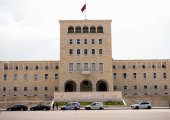
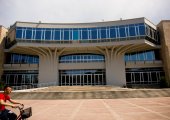
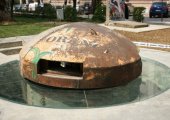
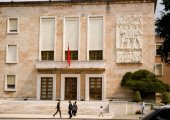
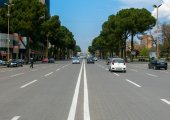
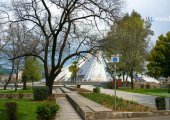
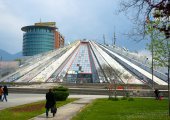
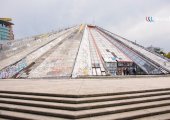
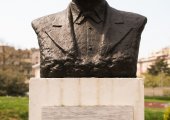
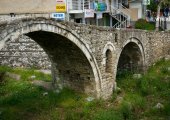
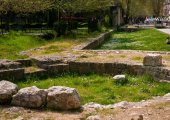
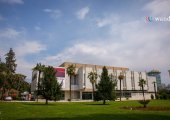
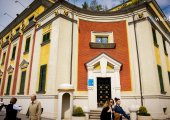
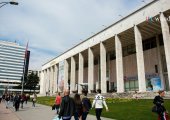
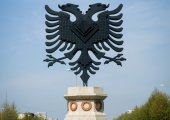
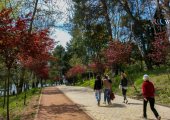
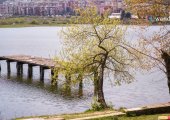

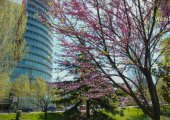



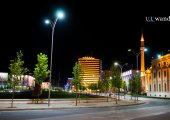
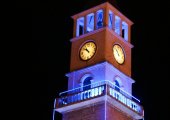
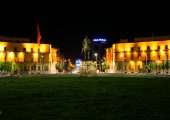



























Tirana became Albania’s capital city in 1920. The population of the city proper at the 2015 census was 610,070.
The city is host to many public institutions and public and private universities, and is the centre of the political, economic, and cultural life of the country.
The city is mostly surrounded by hills, with Dajti Mountain on the east and a slight valley opening on the north-west overlooking the Adriatic Sea in the distance. The Tiranë river runs through the city, as does the Lanë stream.
The city has four artificial lakes: the Tirana Artificial Lake around which was built the Big Park, Paskuqani Lake, Farka Lake, Tufina Lake, and other smaller lakes or reservoirs.
Tirana is on the same parallel as Naples, Madrid, Istanbul, and New York, and on the same meridian as Budapest and Kraków.
The area occupied by Tirana has been populated since the Paleolithic era, dating back 10,000 to 30,000 years ago, as suggested by evidence from tools excavated near Mount Dajt's quarry and in Pellumbas Cave. As argued by various archaeologists, Tirana and its suburbs are filled with Illyrian toponyms, as its precincts are some of the earliest inhabited regions in Albania. The Illyrians called the settlement Tërana.
The oldest discovery in downtown Tirana was a Roman house, later transformed into an aisleless church with a mosaic-floor, dating to the 3rd century A.D., A castle possibly called Tirkan or Theranda, whose remnants are found along Murat Toptani Street, was built by Emperor Justinian in 520 A.D. and restored by Ahmed Pasha Toptani in the 18th century. The area had no special importance in Illyrian and classical times.
Records from the first land registrations under the Ottomans in 1431–32 show that Tirana consisted of 60 inhabited areas, with nearly 2,028 houses and 7,300 inhabitants. In 1614, Sulejman Bargjini, a local ruler, established the Ottoman town with a mosque, a commercial centre and a hammam (Turkish bath). The town was located along caravan routes and grew rapidly in importance until the early 19th century.
During this period, the Et'hem Bey Mosque, built by Molla Bey of Petrela, was constructed. It employed the best artisans in the country and was completed in 1821 by Molla's son, who was also Sulejman Bargjini's grandnephew. In 1800, the first newcomers arrived in the settlement, the so-called ortodoksit. They were Vlachs from villages near Korçë and Pogradec, who settled around modern day Park on the Artificial Lake. They started to be known as the llacifac and were the first Christians to arrive after the creation of the town. After Serb reprisals in the Debar region, thousands of locals fled to Tirana. On 28 November 1912, the national flag was raised in agreement with Ismail Qemali. In 1917, the first city outline was compiled by Austro-Hungarian architects.
On 8 February 1920, the Congress of Lushnjë proclaimed Tirana as the temporary capital of Albania. The city retained that status permanently on 31 December 1925. In 1923, the first regulatory city plan was compiled by Austrian architects. The centre of Tirana was the project of Florestano Di Fausto and Armando Brasini, well known architects of the Benito Mussolini period in Italy. Brasini laid the basis for the modern-day arrangement of the ministerial buildings in the city centre. The plan underwent revisions by Albanian architect Eshref Frashëri, Italian architect Castellani and Austrian architects Weiss and Kohler. The rectangular parallel road system of Tirana e Re district took shape, while the northern portion of the main Boulevard was opened.
In the political sphere, Tirana experienced such events as intermittent attacks on the mountain pass of Shkalla e Tujanit (Tujan's Staircase) by the army of the Kingdom of Serbs, Croats and Slovenes and forces loyal to Zogu. In 1924, Tirana was at the centre of a coup d'état led by Fan S. Noli. Since 1925, when they were banned in Turkey, the Bektashis, an order of dervishes who take their name from Haji Bektash, a Sufi saint of the 13th and 14th centuries, made Tirana their primary settlement. Modern Albanian parliamentary building served as a club of officers. It was there that, in September 1928, Zog of Albania was crowned King Zog I, King of the Albanians.
The period between the 1930s and 1940s was characterized by the completion of the above architectural projects, clashes between occupying forces and local resistance and the coming to power of the communists. In 1930, the northern portion of modern Dëshmorët e Kombit (National Martyrs) Boulevard was finished and named Zog I Boulevard. Meanwhile, the ministerial complex, boulevard axis, Royal Palace (Palace of the Brigades), former municipal building, and the National Bankwere still under construction. The latter is the work of the renowned Italian architect Vittorio Ballio Morpurgo.
In 1939, Tirana was captured by Fascist forces appointing a puppet government. In the meantime, Italian architect Gherardo Bosio was asked to elaborate on previous plans and introduce a new project in the area of present-day Mother Teresa Square. By the early 1940s, the southern portion of the main boulevard and surrounding buildings were finished and renamed with Fascist names. A failed assassination attempt was made on Victor Emmanuel III of Italy by a local resistance activist during a visit in Tirana. In November 1941, two emissaries of the Communist Party of Yugoslavia (KPJ), Miladin Popović and Dušan Mugoša, managed to call a meeting of three Albanian communist groups and founded the Communist Party of Albania, of which Enver Hoxha would shortly emerge as the leader.
The town soon became the center of the Albanian communists, who mobilized locals against Italian fascists and later Nazi Germans, while spreading ideological propaganda. On 17 November 1944, the town was liberated after a fierce battle between the Communists and German forces. The Nazis eventually withdrew and the communists seized power.
From 1944 to 1991, the city experienced ordered development with a decline in architectural quality. Massive socialist-styled apartment complexes and factories began to be built, while Skanderbeg Square was redesigned with a number of buildings being demolished. For instance, Tirana's former Old Bazaar and the Orthodox Cathedral were razed to the ground for the erection of the Soviet-styled Palace of Culture. The Italian-built municipal building was detonated and the National Historical Museum was constructed instead, while the structure housing the Parliament of Albania during the monarchy was turned into a children's theater.
The northern portion of the main boulevard was renamed Stalin Boulevard and his statue erected in the city square. As private car ownership was banned, mass transport consisted mainly of bicycles, trucks and buses. After Hoxha's death, a pyramidal museum was constructed in his memory by the government.
Prior to and after the proclamation of Albania's self-isolationist policy, a number of high-profile figures paid visits to the city, such as Soviet leader Nikita Khrushchev, Chinese Premier Zhou Enlai and East German Foreign Minister Oskar Fischer. In 1985, Tirana served as the ceremonial venue of Enver Hoxha's funeral. A few years later, Mother Teresa became the first religious figure to visit the country following Albania's long declared anti-religious atheist stance. She paid respect to her mother and sister resting at a local cemetery. Starting at the campus and ending at Skanderbeg Square with the toppling of Enver Hoxha's statue, the city saw significant demonstrations by University of Tirana students, demanding political freedoms in the early 1990s.
At present, tourists usually find Tirana a beautiful and charming city, where cosmopolitan and small town feelings are intertwined with a lively night life. However, Tirana suffers from pollution problems mainly due to the rapid increase in cars in the city and continuous construction. Long gone are the days when Tirana used to be subject to power outages almost daily and this made Tirana a noisy city as the lack of power and lack of traffic lights had cars navigating by honking their horns.
Today the situation has dramatically improved regarding power outages. Tirana is undergoing a major renovation from its communist days. Many of the ugly dull buildings have been repainted, but a lot of work still needs to be done. English is rapidly gaining steam as the second language of the city with the youth but many older residents also speak Italian.
Albanians are very hospitable towards foreigners, despite media frequently portraying them as thieves and mobsters. Tirana itself is very approachable if you're the adventurous type - crime is rare, if ever directed towards foreigners and the costs are very low by regional standards. The worst experience you may have is with erratic driving style of Albanians.
The main business and entertainment area (not by coincidence) has become "The Block" (Blloku) which is the area where in the past, the communist leaders used to live under strict protection. Locals prefer to hang out at the many cafes and main parks. Tirana is a youthful and lively town resonating constant energy. A popular retreat is by cable car to Mount Dajti where one can get a panoramic view of the city from above.